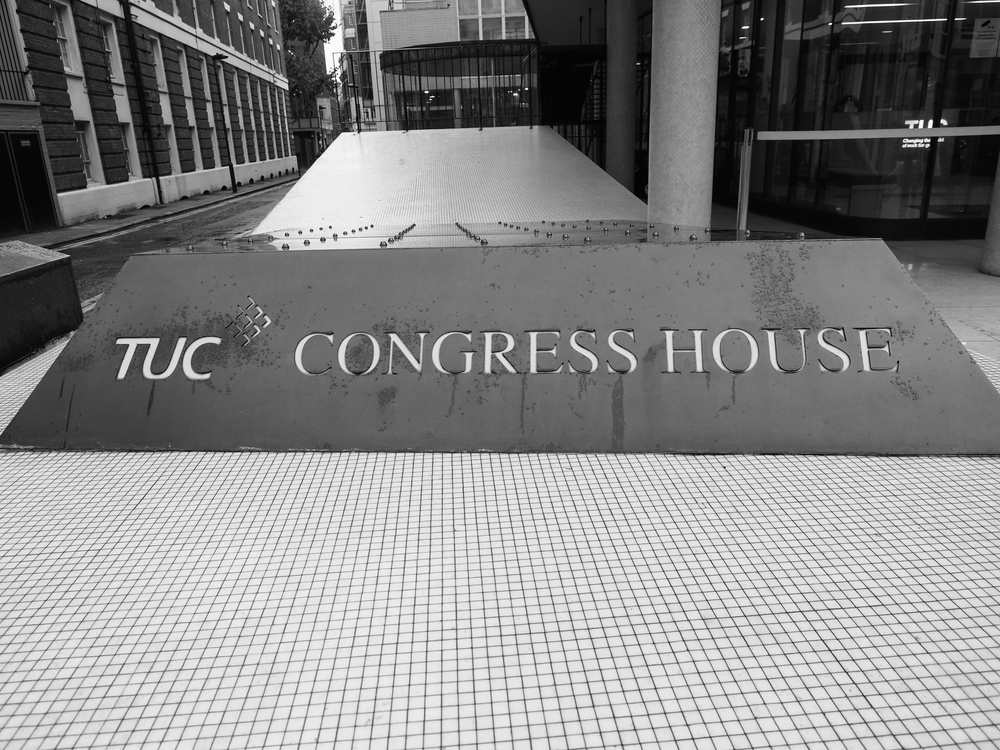
If Karl Marx were alive today, he would no doubt be stoking the revolution through digital means. And he might turn in his grave to discover that trade unions are not making the most of technology to reverse the declining trend in membership.
Luckily for the labour movement, technology leaders such as Simon Parry are helping to ignite a digital revolution that puts technology at the forefront of the workers’ struggle.
Parry is virtual CIO (vCIO) at the Trades Union Congress (TUC); the federation of trade unions in England and Wales that represents 48 affiliated unions and about 5.5 million members. He is the first person to hold the post and since joining in October 2016, he’s led a series of digital transformation projects and nurtured a digital culture across the organisation.
Here, Parry speaks to Tech Monitor about how he became the forefather of the ‘eBranch’, and what trade unions can do today to become more digital savvy and use technology to benefit the trade union movement.
Setting up the first virtual branches
Back in the late ’90s, after finishing a master’s degree in information management, Parry landed a job as information and website manager at the Engineers’ and Managers’ Association (EMA) – a small union which later merged into Prospect.
“It was kind of a controversial decision to work for a trade union because this was the dot-com boom days and most of my colleagues had gone to work in the private sector,” says Parry.
But it was during his time at EMA that Parry saw how the trade union movement could benefit from the digital revolution of the dot-com era. Soon enough he had a eureka moment to create what would later be known as virtual branches.
Branches are core structures that support union members on labour disputes and provide advice on workplace matters. They consist of members working in the same industry, based in a particular area, or working for the same employer.

At EMA, Parry found that members working abroad for an international power company weren’t able to meet with union reps or negotiators because of the geographical distance. A virtual branch, he realised, could help bridge the physical gap between members and their union reps.
“This was seen as very innovative at the time,” explains Parry. “Members could access the virtual branch through the union website and via a chat system they could speak to their reps and negotiators based in the south-west of England from China and Pakistan.”
The chat system was written as a Java applet and it won an award for its innovation. Most importantly, it was the predecessor to the eBranch system still used by Prospect and later adopted by other major unions, including Unison, which then developed their own variations.
Other achievements include building one of the first systems that allowed members to change their details and set-up subscriptions’ direct debits online instead of having to print out and post forms. Today, eBranches serve as content management systems (CMS) for members where they can access resources, membership lists, mass email tools and other materials essential for trade union activities.
The unions’ digital struggle
So why, when digital tools such of these have been available to unions for many years, do so many lag behind in adoption?
Although trade unions around the world were pioneers in the use of internet (it was seen as a cheap alternative to calls and faxes), there has historically been some resistance when it comes to the adoption of new technologies, American trade unionist and developer Eric Lee wrote in the late 1990s.
Much of this resistance is perpetuated by a senior leadership stuck in the ‘old ways’ of recruiting and mobilising members. However, younger middle-level and rank-and-file activists are changing this.
“It’s recognised that the trade union movement needs to improve in the digital arena,” says Parry. “It’s a cultural thing, not just technical. However, unions are increasingly becoming more aware of their members’ and potential members’ expectations and we need to make sure we are meeting those needs.”
Some of those needs and expectations include a more widespread development and use of apps for members – an area already being explored by some unions.
Parry thinks that trade unions should exploit the richness and diversity of the movement, which encompasses workers from all industries and a wide range of backgrounds. And the best way of exploiting this strength in the digital sphere, he says, is finding a consensus of best practices and share them.
“People are innovating a lot in the movement so it’s best if we establish good practices and work together – we need common practices shared more widely,” he tells Tech Monitor.
One way to spread these best practices is through the TUC Digital Lab – a web portal with resources for trade unions to help their digital projects initiatives and assess their digital maturity.
Among the resources available in the TUC Digital Lab are workshops. Parry and his colleagues held a series of them covering how to best make online joining forms for new members. Using Google Analytics and feedback from consultants, the workshop equipped union staff with the skills necessary to improve the digital sign-up process.
Other workshops run at the TUC Digital Lab include one on leveraging data to improve the union experience.
In Parry’s view, digital innovation is about improving productivity among unions. If they use the best practices, they will reap the fruits by getting value for money and making the organisation more efficient. Not only that, but technology has also the potential to tackle the long-standing issue of declining trade union membership.
Should trade unions have their own CIO?
A while back, Parry recalls, unions wouldn’t have any technology representatives among senior management, as would be the case among most organisations. “I’m hoping that’s changed,” says Parry.
Today, some trade unions have a CTO or equivalent role – but they are still a minority. For Parry, it’s clear that unions should have a CIO or someone with the technical knowledge that allows them to “think tech”.
“Unions need more CIO-type roles, even if it’s just a virtual CIO (vCIO) who can come in a few days per month and give some advice,” Parry tells Tech Monitor. “The vCIOs is still an emerging role and not as common as it could be.”
Virtual CIOs like Parry, who works for the TUC a few days per month, can help trade unions progress on their digitalisation journeys while also keeping costs under control – which is one of the main obstacles preventing them from recruiting a full-time CIO.
As opposed to a CIO on the payroll, vCIOs work on a contractual basis. They are a convenient solution for those organisations on a shoestring budget who nonetheless want to invest on their digital strategies.
Whether a vCIO or a full-time post, it’s up to each trade union and its members to consider how much they want to invest in technology and digital. However, if unions want to stay ahead of the curve and remain relevant among younger audiences, this investment seems a necessity.






